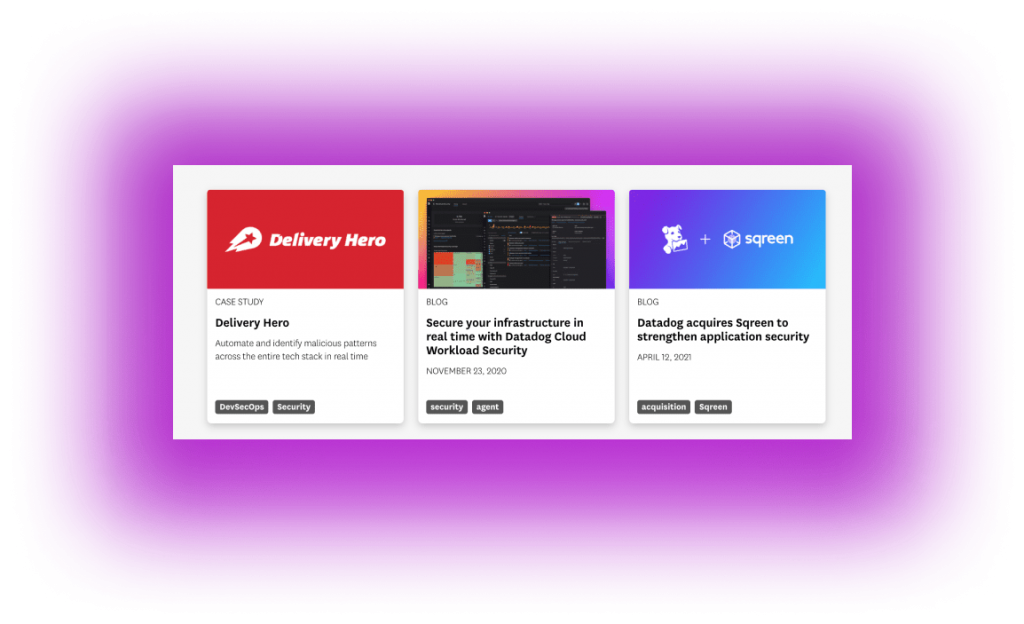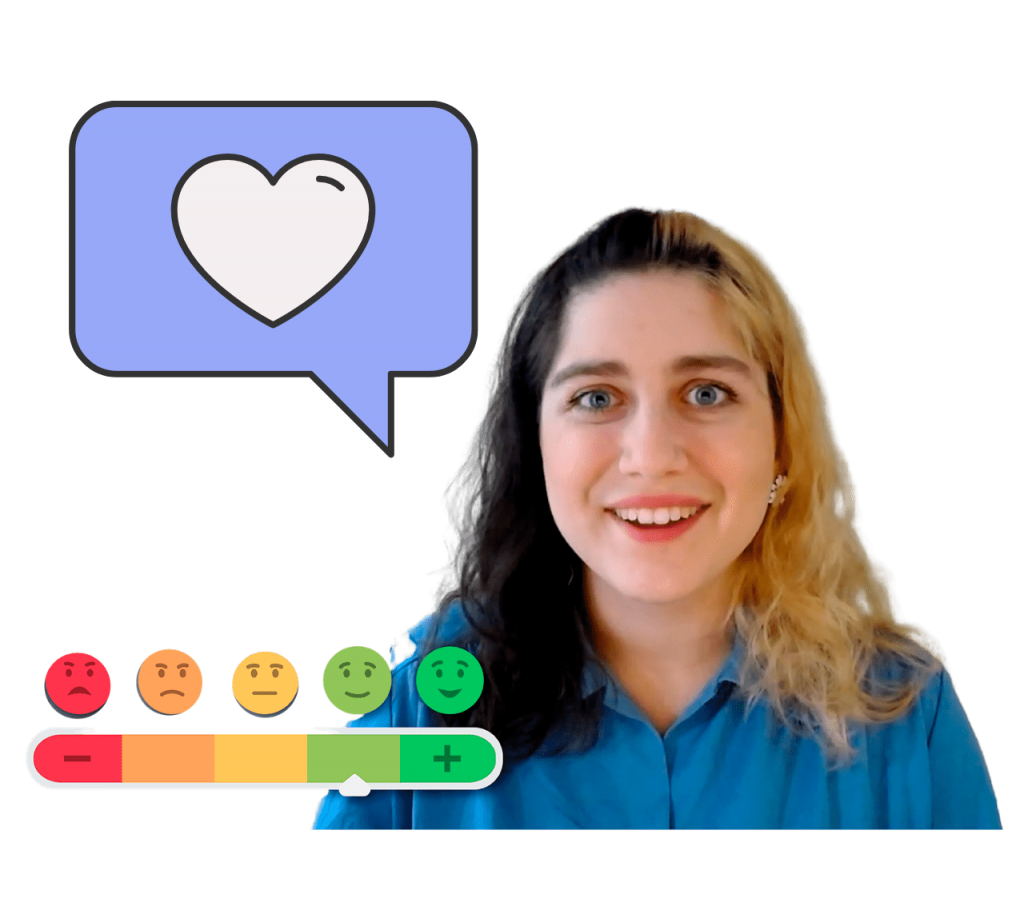Blogging is a phenomenal way for technology companies to generate organic traffic, increase their B2B leads, and establish themselves as industry leaders. According to a study from Hubspot, B2B companies that publish 11+ blog posts per month get nearly 300% more traffic than companies that publish 0-1 posts in the same timeframe. Let’s examine why:
- When you start a B2B tech blog, you’ll get to inject relevant keywords into your site in a natural, non-spammy way.
- Google loves fresh content, and blogs refresh your site with content regularly.
- Social signals impact your search engine rankings, and a blog skyrockets opportunities for social media activity.
- Blogs with quality content attract quality inbound links
So, if you aren’t prioritizing your B2B marketing blog (or if you haven’t launched one yet – gasp!), this is your sign to start! But before you assemble an editorial team and start churning out content, I’d recommend reading up on the best ways to craft B2B blog content.
Table of Contents
B2B vs. B2C Blog Content – Is There a Difference?
You see, marketing to a business is waaaaay different than marketing to a consumer. Either way, you’re selling to a human being – but that human will change their decision-making processes depending on whether they’re purchasing for themselves or as a business representative.
In past articles, I’ve written about using emotional hooks, storytelling, simple language, and consumer-centric principles; however, that is mostly relevant to B2C marketing. When an executive is making a business decision and choosing between two products, they likely won’t be swayed by emotional elements – especially if they’re very familiar with marketing tactics. Instead, they’re going to look at the cold, hard facts.
Now, this doesn’t mean that your B2B content marketing needs to be boring! In fact, if your content is bland, boring, or forgettable, it will harm you in the long run, so you still need a solid grasp of how to create engaging texts. You just need to focus a little less on emotions and instead appeal to the reader’s logic.
Setting Goals
Please, please, please don’t jump straight to content creation without clearly defining your goals! Otherwise, you’ll waste loads of time and resources on guessing what to post. Three common goals include:
Thought leadership. If you’re a B2B company that offers highly technical services or unique products, it will benefit you to become an authority in relevant niche topics. As a thought leader, you’ll be able to answer prevalent questions your target audience has. You’ll need copywriters with strong technical knowledge, but it’s well worth it. By answering difficult questions, you’re able to build your image of authority in a specific industry, therefore encouraging your target audience to trust you – and do business with you.
Brand awareness. When I think about B2B blogs with this goal, Hubspot, Copyblogger, and Buffer come to mind. To become a household IT name, you have to go beyond just publishing simple blog posts; instead, you need to explore all kinds of tactics – from creating behind-the-scenes videos, publishing free ebooks, interviewing experts in the field, participating in virtual events, and so on.
Customer service/community building. One great way to keep your existing customers happy is to publish content that helps them use your product better. You’ll need to learn their pain points, listen to their questions, and create content that addresses their challenges. By creating this sort of resource, you’re also developing a community around your product.
Creating Reader Personas
You need to figure out who you want to attract to your blog so you can create tailored content. Here are some questions that can help you develop a persona and then craft content accordingly:
- What is the reader’s job?
- What industry do they belong in?
- What skills do they need in order to do their job?
- What are their biggest challenges?
- What are they likely searching on Google?
- What tools can help them do their job better?
- Are they already a part of your B2B portal?
- What topics will help them develop their career?
- What social networks or groups are they part of?
Discovering Topics of Interest
That same Hubspot study mentioned earlier found that 93% of B2B purchases begin with an online search. You need to apply a strong SEO strategy to your content so it will actually show up in those searches.
When selecting keywords and topics for your articles, you might be tempted to focus on your product features; however, the vast majority of your audience is searching for product benefits. So, it is really effective to write blog content that uncovers, discusses and solves audience pain points.
Of course, to do that, you’ll first need to research the challenges that your audience is experiencing; this can be done through:
- Viewing existing research publications
- Interviewing your existing buyers
- Browsing social media accounts and forum discussions
Write content that showcases your solution to these challenges, using keywords when possible.
Let’s look at DataDog, a B2B SaaS provider. I love how they title their blog posts! There are 2 parts to most of their titles: (1) a benefit that customers want and (2) the DataDog feature that fulfills the need.

It’s clear that DataDog has done plenty of research into its target audience’s pain points & used that data to create a blogging strategy.
Developing a B2B Tone of Voice
Earlier, I mentioned that B2B content needs to be written differently than B2C – mainly that there should be more of a focus on logic and tangible benefits rather than emotional draws. HOWEVER! This doesn’t mean that your content should be dry and boring – or that uniqueness doesn’t matter.
When you write like other B2B companies, you’re essentially telling your readers that your products are like everybody else’s. That’s the opposite of what you want! It’s important to develop a compelling B2B tone of voice that fits your brand – and then implement it consistently across your posts.
Take, for instance, Mailchimp. In their Voice and Tone guide, they outline that all of their copy is:
- Plainspoken. They don’t use upsells, hyperbolic language, or over-promises. Fluffy metaphors and cheap plays on emotion are never used.
- Genuine. Mailchimp’s copy relates to customers’ challenges and strengths, speaking to them in a warm, familiar, and accessible way.
- Translational. In their words, they demystify B2B-speak, making complex subjects look simple.
- Full of dry humor. They prefer to use humor that is subtle and straight-faced, yet not condescending.
Exchanging Value for Contact Details
Once you’ve gathered traffic to your blog, you want visitors to take the next step – entering contact details to learn more about your company. One great way to nurture readers down the B2B sales funnel is by offering a “next step” – perhaps a White Paper, eBook, demo, or webinar that’s related to the content they just read.
However, writing a CTA button for “next steps” is more difficult than it seems! Writing generic text like “Sign up to download an eBook on xxxxxx” simply won’t cut it. Where’s the creativity? Where’s the pull? Instead, you need to create a compelling case for your downloadable content – just because it’s free doesn’t mean the reader will want it.
Bolding this because it’s important! The best CTA buttons don’t look like blatant ads. Instead, they’re presented as a path towards valuable information discovery.
The CTA button below, for instance, doesn’t try to sell any service – in fact, it doesn’t focus on the business at all! The button is solely focused on what the reader stands to benefit: valuable knowledge on SEO.

Employing Professional B2B Blog Writers
Writing B2B content is difficult – you need to strike the right balance between engaging and factual while staying consistent with your brand’s tone of voice. And, to make things more complicated, writing IT texts is pretty challenging on its own.
So, what do you do if you don’t have an editorial team that’s up to the task? That’s where we come in! Our B2B blog writing service covers the entire process – keyword research, information gathering, writing, fact-checking, editing, and proofreading. We have specialized IT writers on our team, and we’re well-versed in creating IT content. All you have to do is share your vision with us, and we’ll work to make it a reality.
Interested in learning more? Let’s chat about it!











